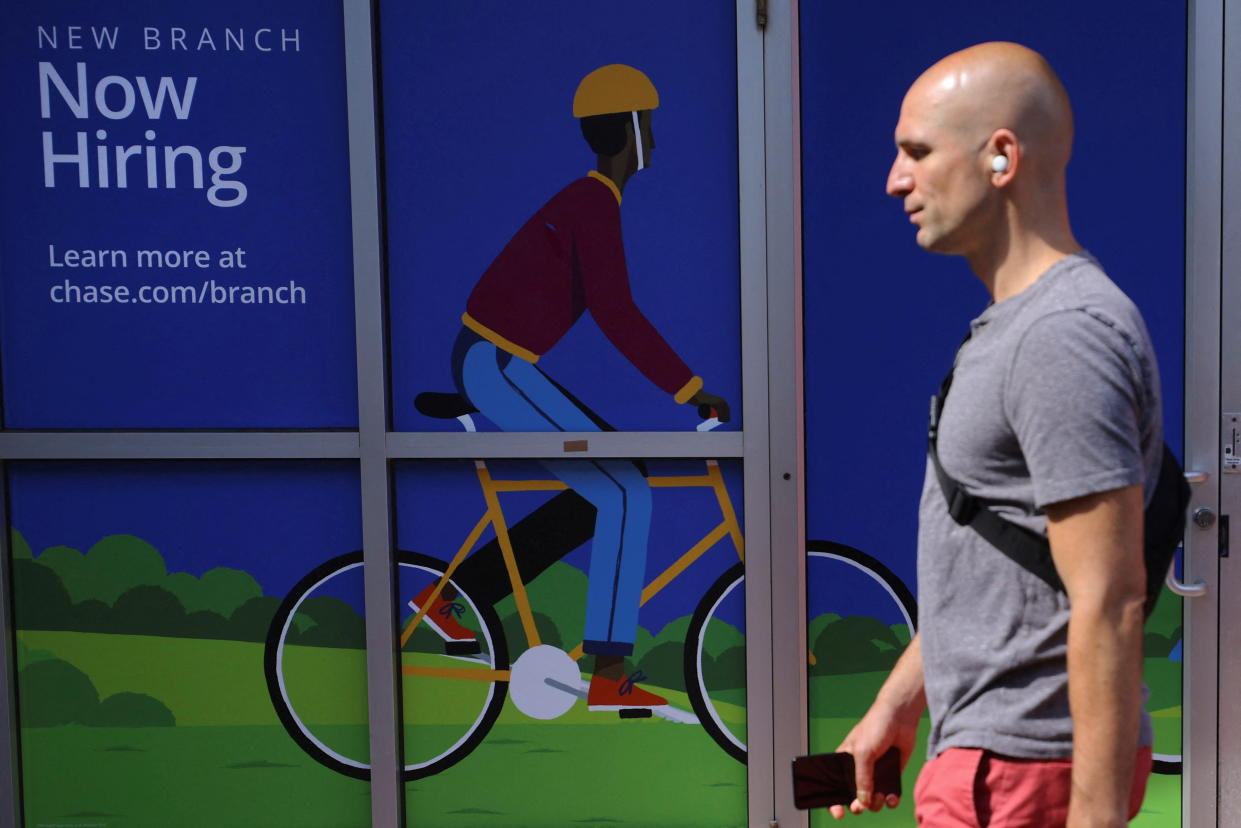Employees have little reason to change jobs right now — here's why
The financial incentive for Americans to leave their job seems to be over.
ADP chief economist Nela Richardson said during a call with reporters on Wednesday that any lingering signs of the pay benefits from the "Great Resignation" are a thing of the past.
ADP's monthly private payroll data released Wednesday showed the annual wage growth for workers changing jobs fell to 7.2% in January, the slowest pace of growth since May 2021. Meanwhile, workers who kept the same job saw wages rise 5.2% last month, the least since August 2021.
In other words: The gap is closing. During the peak of the post-pandemic job switching surge, for instance, the gap had been larger than 7 percentage points.
"You're seeing solid pay growth, not supercharged pay growth like we saw before," Richardson said.
Pay bumps for job changers come as headlines of layoffs from many major companies pile up to start the year. Economists recently told Yahoo Finance that these layoffs aren't showing up enough in economic data to point to an outright downturn in the labor market — but they might be providing an early warning sign for workers about the shifting state of the labor market.
The latest Job Openings and Labor Turnover Survey, or JOLTS report, revealed that the quits rate in December remained unchanged at 2.2%. The rate has tracked lower from the 3% level seen in 2022, the highest on record, but remains roughly in line with pre-pandemic levels. Quits are closely watched by economists, as elevated rates are seen as a sign of confidence among workers.
Hires ticked up slightly for the month. But Nick Bunker, the director of North American economic research at Indeed, pointed out that the three-month rolling average of hires as a percentage of total employment is now below pre-pandemic levels.
"If hiring continues to lose steam, the moderation of the labor market will become more painful as workers have a harder time finding work," Bunker wrote in a blog post on Hiringlab.org.
The usual data stars of the #JOLTS report are still shining bright – layoffs are still low, openings are robust, and quitting is back to pre-pandemic levels.
But it’s hires data, a series that traditionally gets less attention, that should be getting its close-up moment. pic.twitter.com/svGXzweJZ0— Nick Bunker (@nick_bunker) January 30, 2024
For now, though, many economists see the decrease in wage growth as a welcome sign for the Federal Reserve in its fight against inflation — and the signs of a tougher environment to find jobs are merely a return to normal in the labor market.
"We're still just working through a lot of disruptions [from the lockdown]," Claudia Sahm, a former Fed economist, told Yahoo Finance on Tuesday.
The Employment Cost Index (ECI), a closely watched wage indicator by the Fed also released on Wednesday, grew 0.9% compared to the prior quarter in the final three months of 2023.
Capital Economics deputy chief US economist Andrew Hunter noted that this is the slowest quarterly increase seen in the ECI in two and a half years. To Hunter, this indicates that the Fed should be on track to cut interest rates soon.
Read more: What the Fed rate-hike pause means for bank accounts, CDs, loans, and credit cards
"The further slowdown in wage growth evident in the fourth-quarter employment cost index illustrates that easing labour market conditions are helping to push inflation down," Hunter wrote in a note to clients on Wednesday."
"With the moderation in job openings and quits pointing to a further slowdown in wage growth, that should reassure Fed officials that core inflation can be sustained at the 2% target."

Josh Schafer is a reporter for Yahoo Finance. Follow him on X @_joshschafer.
Click here for the latest stock market news and in-depth analysis, including events that move stocks
Read the latest financial and business news from Yahoo Finance
